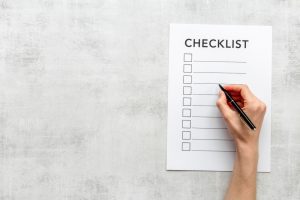Exposure Benchmarking Process Explained

Looking for more information on competitor benchmarking for events and trade shows? Exposure Analytics is happy to help.
We all how competitive trade shows and exhibitions can be, especially with such high stakes. Our cutting-edge competitor benchmarking system provides the answer. With our innovative Booth Scoring, we offer unprecedented insights into your event performance, allowing you to measure your success against industry standards and direct rivals, giving you that all-important edge.
What are the different types of benchmarking?
There are several common types of benchmarking, including:
Internal benchmarking – Internal benchmarking involves comparing different departments or projects within your own organisation.
Functional benchmarking – In this case you’ll extend beyond your immediate industry and compare specific business functions across different sectors. You might do this to expand your field of benchmarking to get innovative new ideas currently uncommon in your field.
Industry benchmarking – As you would imagine, this involves comparing your performance against industry averages. This means taking a macro view to see where you stand.
Competitive benchmarking – This is when you compare your performance against direct competitors. By analysing your competitors’ strategies and results, you can gain valuable insights to enhance your own market position.
At Exposure Analytics we can offer both competitive benchmarking and industry benchmarking – two of the most difficult types of benchmarking metrics to acquire with any degree of accuracy.
Why opt for competitor benchmarking?
Competitor benchmarking offers a unique opportunity to gain valuable insights into your market position. By directly comparing your performance against your rivals, you can identify areas where you excel and where there’s room for improvement. This type of benchmarking helps you stay ahead of industry trends, spot potential threats, and uncover untapped opportunities.
How to benchmark against a competitor
Here are the basic steps involved in competition benchmarking:
- Identify key performance indicators (KPIs)
- Collect data on both your own performance and your competitors in the area that’s most relevant
- Analyse the data to identify gaps and opportunities
- Develop strategies to improve performance
- Implement changes and monitor results
While this is sound in theory, in practice most exhibitors will have little to no data about their own performance, let alone competitors.
With Exposure Analytics’ Competitor Benchmarking you’ll have unprecedented access to both.
Introducing: Booth Scoring
Digital analytics is standard practice for online sales, advertising and brand building. Think of our products as the same service but for offline spaces.
Taking feedback from initial results and analysing the data to make optimisations is the norm, both at the start of a campaign and throughout. In fact, often it’s simply built into the online algorithms to prefer the best performing results. That’s how online brands get ahead of competitors.
So why is that same attitude not taken by offline brand activities like live events and trade shows? It’s an equally important space to take control of.
The answer is simple – most people simply don’t have the data to make well thought-out, data-based optimisations. That’s why our products exist, including booth scoring.
How is the booth score calculated?
Our Booth Score is calculated using data collected from other booths or activations using our sensors. We aggregate this data and distil it into a score out of 5, making it easy to understand and compare your performance at a glance.
Do you give industry averages?
Once a year we release industry sector average scores to help you understand where you sit in your exact sector. This industry benchmarking can be foundational for understanding how you stack up and whether change is needed. In addition we release the average score across all of our events quarterly for extra context.
Where does Exposure Analytics get benchmarking data from?
We source our benchmarking data from our cutting-edge event analytics sensors. Here’s an introduction to how they work and what they can do for you.
Apex
Imagine having someone at your event that can count every visitor with incredible accuracy. That’s exactly what Apex offers. This clever system uses 3D cameras to tally attendees in virtually any event space size.
It can also give you real-time updates on how busy each area is, helping you manage your live event and make reactive changes. It’s tough enough to work whatever the weather, so you can install it for both indoor and outdoor events.
People Coordinates
People Coordinates maps precise attendee movements with extreme accuracy. It assigns unique IDs to visitors, allowing real-time monitoring of their movements and interactions throughout the event. This system measures specific interactions and dwell times.
EX Sensors
EX Sensors are compact devices that anonymously capture data from attendees’ smartphones via wifi signals. These versatile sensors provide key metrics like visitor counts and dwell times. They also generate visual representations of customer footfall.
Why choose Exposure Analytics for benchmarking?
There aren’t many solutions as advanced as our sensor technology – after all, we’ve been honing our tech for decades. That means that we’re the go-to provider for many clients, from global giants like Amazon and Google to smaller start-ups and scale-ups chasing growth.
This gives us data from event venues, brand activations, exhibitions, trade shows, pop-ups and experiential events across a vast range of sectors. All of this data powers our benchmarking scoring.
What are the best sectors to use competitor benchmarking for?
Fundamentally, our technology can be used in any space where people gather and metrics about their movements are needed. However, there are certain sectors where this is hotly demanded. These tend to be sectors which:
- Have a presence in exhibitions or trade shows
- Run experiential events, pop-ups or brand activations
- Run large venues or run events in large venues
We’ve been trusted by clients who have a presence in all of these spaces and want to make the most out of their investment.
Pharmaceutical
To give an idea of the scale of the pharma industry, the UK exported a whopping £26.1 billion worth of medicinal and pharmaceutical goods in 2023. Much of the trade for these vital pharma contracts is done at trade shows.
It’s not easy to distil information and USPs about complex and regulated goods into a booth of potentially only a few metres. Our competitive benchmarking helps pharma players know if their booths are meeting the mark.
Automotive
Another trade show giant is the automotive industry. We’ve worked with key players like Porsche, Peugeot & BMW to help them hone their brand presence at events. Where space is short and rewards are large, every set of eyes is worth fighting for against the competition.
Large-Scale Venues
There are lots of different use cases for benchmarking for venue spaces. A good example is our work with Olympia, a huge venue and exhibition space in London. In our Olympia eForce case study we give more detail about exactly how we helped them gather accurate metrics about which booths their attendees visited and their engagement rates.
Technology
We’d be wrong to miss tech giants out from this list. Building brand awareness at exhibitions can be a crucial part of technology marketing strategies. Understanding whether experiential events are paying off can help technology businesses know if their investment is paying off with attendee engagement compared to peers.
What kind of implementations can result from competitive benchmarking?
Ultimately, knowledge is always power. Competitive benchmarking software can lead to actioning implementations such as:
- Redesigning booth layouts for better visitor flow
- Optimising product displays and demonstrations
- Refining marketing messages and materials as well as marketing budgets
- Adjusting event budgets based on ROI comparisons
- Distributing staff to make the best impact
By leveraging the insights from Exposure Analytics’ competition benchmarking, you can make data-driven decisions that significantly improve your event performance and ROI.
Get a free demo of your own competitor benchmarking analysis
If you’re ready to see how you stack up against your key benchmarking competitors and sector, give us a call on 0203 982 0997 to arrange a free demo and discuss your needs. One of the Exposure Analytics team will be happy to talk about how our benchmarking software can help make this a reality.


